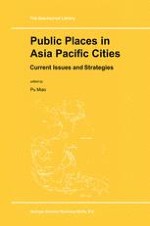2001 | OriginalPaper | Buchkapitel
Design with High-Density: A Chinese Perspective
verfasst von : Pu Miao
Erschienen in: Public Places in Asia Pacific Cities
Verlag: Springer Netherlands
Enthalten in: Professional Book Archive
Aktivieren Sie unsere intelligente Suche, um passende Fachinhalte oder Patente zu finden.
Wählen Sie Textabschnitte aus um mit Künstlicher Intelligenz passenden Patente zu finden. powered by
Markieren Sie Textabschnitte, um KI-gestützt weitere passende Inhalte zu finden. powered by
While the urban design theories and practices of Western industrial countries have been the only precedents for booming Chinese and other Asia Pacific cities, many differences between the two worlds prevent direct imitations. The most important ones, such as higher population density, smaller amount of public space, lack of squares, heavier use of public space, and pro-development culture in Asian cities, have been outlined in the Introduction of this volume (Figure 1). Among them the issue of high density deserves special attention. The treeless design of Italian plazas illustrates how the high density of the walled medieval towns affected the form of their public spaces. American architect Michael Brill argues that US cities should not model their public spaces after the Italian plaza, for the low density of US cities cannot support such a form.2 By the same token, the hyper-dense environment of Asia Pacific cities is a different animal from that of the relatively low-density of Western cities and demands a qualitatively different treatment. This chapter will present six such design strategies for Chinese urban public space, which use architectural means to improve social interaction, environmental identity, territoriality, and efficiency of space in a densely inhibited environment. Derived from observation of existing examples, my own practice, and theoretical research, these proposals are mainly intended for existing Chinese cities, but may have implications for new towns and other Asia Pacific cities because similar urban conditions can be found there.
